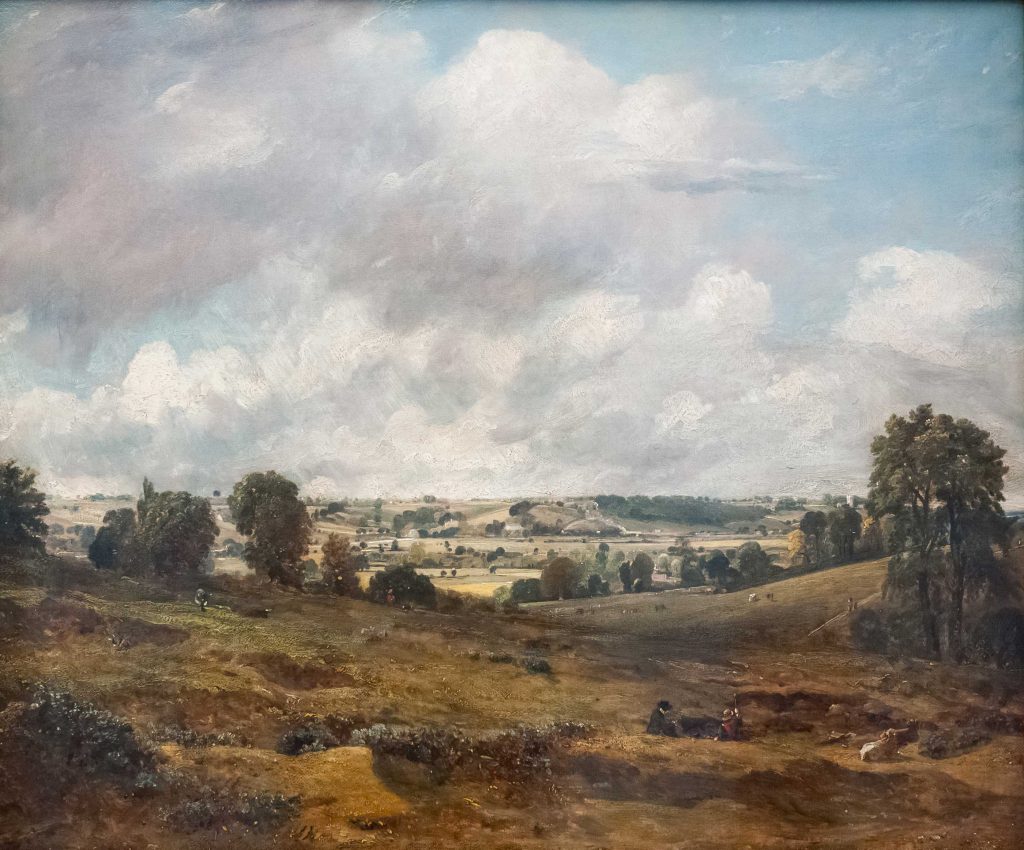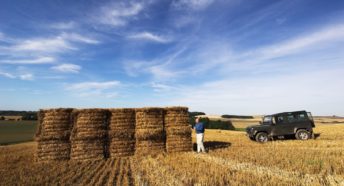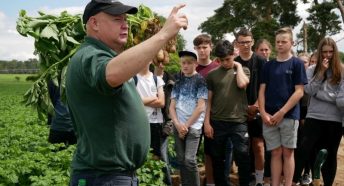How farming policy can contribute towards public good
Can art history give us a route to a farming future, asks our farming expert Graeme Willis.
In times of crisis, or crises, it’s hard not to look upon the past as an antidote to the fears of facing the future. The English countryside – and those who live and work there – face at best an uncertain future and a plethora of challenges as varied as the climate emergency, rural isolation and farmer suicides, species decline and unclear changes in the business environment.
Looking at the iconic images of Suffolk and Essex landscapes painted by John Constable in the early 19th century, it’s hard not to see gentler times in their pastoral beauty. Yet, Constable was no romantic. Look more closely into his paintings of Dedham Vale. They’re full of rural working life: cattle and sheep, carts and the plough, harvesting and boat work on the Stour. They show his love for the natural beauty he saw around him but also an understanding of the ‘made countryside’; his appreciation of those who worked and lived in it and shaped its character.
Insights from art
There’s wisdom in great art. Constable shows us the lived reality of rural toil: working the land to produce the food that nourishes our body, but also the beauty and shaped nature that nourishes our soul; inspiration, health and wellbeing, in modern parlance. If the policies that shape the future countryside are to address the deep challenges ahead then they need to bring these two ends of the spectrum together and everything in between: from heritage, culture and health through clean air and water, carbon sinks, wildlife and healthy soils to the materials it yields – food, fibre, fuel, timber. All of these are clearly in the public interest; the greater ‘public good’.

Call it holistic, integrated or systems thinking, but this kind of broad-spectrum perspective, though difficult to do, is needed now more than ever. Imagine the opposite: taking an atomised or reductive view where the price of food or storage of carbon storage alone dominate the debate – and it’s easier to see where the dangers lie. The Common Agricultural Policy (CAP) was, until the 2000s, too narrowly focused on supporting food production – an understandable result of post-WW2 food insecurity, it’s true, but at some cost. It’s left the English countryside simplified under monocultures, nature depleted, with degraded soils, and polluted water and emitting harmful gases.
And far from leaving farmers flush, after more than 40 years of the CAP the sector is fragile. For many, incomes from farming alone don’t cover costs and farmers have faced a falling share of the food pound. Input costs have risen while prices fall, squeezed by the brutal competition of supermarket retail selling itself to the public on the promise of cheap food.
Making changes
Leaving the EU, even if much is unknown, has offered the chance for agricultural policy to change: to be rebalanced and to create a better targeted, more transparent, more accountable model of funding that delivers better value for money. The model proposed will pay for ‘public goods’ – not merely what’s the public good as in the public interest, but essentially what managing the land can and should deliver but the market won’t pay for.
This could mean the biggest investment in generations to protect and restore elements of nature, such as healthy soils or ecosystems which lock up carbon, deliver nutritious food and clean water or give a home to wildlife. It should mean better, more accessible landscapes which more people visit to engage with nature and benefit their health.
How much future policy will be able to do this depends on many things. It will need to protect UK standards in future trade deals so farmers aren’t undercut, as Oxford professor and economist Dieter Helm has made abundantly clear. It will need the scale of investment in the farmed countryside to match the scale of need: at least £2.2 billion a year, according to the RSPB, to stand still but more, considerably more, to tackle climate change, to cut risk and adapt while driving a recovery of nature across the landscape.
But to do all this will need engaged and committed farmers and land managers. Crucially, new farming policy – and the Environmental Land Management (ELM) scheme to deliver it – will need to build into its design mechanisms for those who manage the land to work together across boundaries of fields, fens and fells. There are already a hundred or more examples of this kind of ‘farmer cluster’ in action and succeeding. These clusters should go forward under any new schemes to enable farmers to build, with local input, a vision for delivering environmental change at scale in landscapes that are meaningful to them and their community.
But they could also, over time, become a powerful way to build new forms of collaboration, such as farmers sharing machinery or creating buying groups to cut costs, or trading manure to drive soil fertility. Such groups could lead to swapping of skills, joint marketing of product and place, as well as direct selling. Not only could they help farmers to cut costs and add value but such clusters could build the social ‘infrastructure’ that helps farmers become less isolated, more cooperative and resilient.
On beauty and graft
New farming policy is an opportunity to transform farming and wider use of the land: indeed, for delivering the environmental public goods that we need to pay for but also to better support farmers themselves in the transformation ahead. That does mean financial incentives but, as importantly, building into the architecture of the new ELM scheme ways to drive the exchange of ideas, learning and mutual support that farming will need in order to change, survive and thrive.
In so doing farming policy has the potential to look after the countryside in a way that harmonises all of it: its beauty and its hard graft.
This article is based on a talk given to the Dedham Vale and Stour Valley Annual Forum on 21 June 2019.







